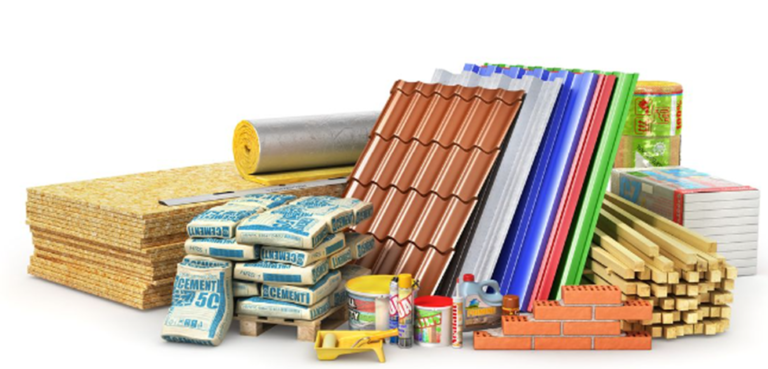Building for a Better Tomorrow: Sustainability in Architecture
Sustainability is increasingly a top priority for architects. They want to lessen environmental effect via innovative designs.

Using Eco-Friendly Materials
Architects prefer ecologically friendly elements in their work. These materials help to lower the environmental impact of buildings. Recycled steel, bamboo, and repurposed wood are common options. Sustainable materials contribute to the creation of stronger buildings. They also minimize waste throughout construction.
Incorporating Renewable Energy
Renewable energy is vital for sustainable architecture. Solar panels are a frequent element on fresh constructions. Architects build structures to maximize sunlight exposure. Wind turbines and geothermal systems also generate renewable energy. These developments reduce the dependency on nonrenewable resources.
Designing for Energy Efficiency
Energy efficiency is a major goal in sustainable design. Architects use insulation and advanced windows to retain heat. This reduces the need for heating and cooling systems. Passive solar design maximizes natural light and heat. These techniques cut energy consumption and save costs.
Green Roofs and Walls
Green roofs and walls are popular in sustainable architecture. These elements absorb rainwater and reduce heat. Plants on roofs provide natural insulation for buildings. Green walls improve air quality and biodiversity. Architects use these features to combat urban heat islands.
Maximizing Natural Light
Sunlight is a renewable resource that architects employ. Windows and skylights minimize the necessity for artificial lighting. This saves energy and reduces electricity expenses. sunlight also benefits the health of building residents. Architects create spaces that enhance solar exposure.
Water Conservation Systems
Water conservation is critical in sustainable design. Architects incorporate rainwater harvesting systems into buildings. This water can be used for landscaping or toilets. Low-flow fixtures and greywater recycling systems save water. Sustainable design helps reduce water consumption in urban environments.
Using Local Materials
Architects often choose local materials to reduce transportation emissions. These materials support local economies and communities. Using local resources also minimizes the environmental impact of shipping. This approach strengthens the connection between buildings and their surroundings.
Designing for Longevity
Sustainable buildings are meant to stay. Architects use durable building materials and techniques. Structures that last longer require fewer modifications in the future. This reduces waste and saves costs. The goal of sustainable construction is to create long-lasting buildings.
Adaptive Reuse of Existing Structures
Architects practice adaptive reuse to save resources. They transform old buildings into new, functional spaces. This reduces the need for new construction materials. Reusing existing structures also preserves historical architecture. It’s a sustainable approach that extends the life of buildings.
Reducing Waste During Construction
Waste reduction is a priority in sustainable design. Architects plan construction to minimize material waste. Prefabrication allows building parts to be made off-site. This reduces waste and speeds up the building process. Sustainable design emphasizes reducing the environmental impact of construction.
Incorporating Smart Technology
Smart technology enables buildings to function sustainably. Architects add sensors to track the usage of water and energy. These devices autonomously regulate the lighting, heating, and cooling. Smart buildings minimize waste and maximize energy savings. Sustainable design relies heavily on technology.
Designing for Flexibility
Flexibility is essential in sustainable architecture. Architects create places that are adaptable to changing demands. Flexible layouts allow for future changes without requiring costly upgrades. This lowers the demand for new materials and construction. Sustainable structures are designed with future adaptation in mind.
Promoting Sustainable Transportation
Architects design spaces that support sustainable transportation options. Bike storage, electric vehicle charging stations, and public transport access are common features. These elements reduce the environmental impact of commuting. Architects create buildings that encourage eco-friendly travel.
Focusing on Indoor Air Quality
Indoor air quality is essential for occupant health. Architects use non-toxic materials in sustainable buildings. Proper ventilation systems improve air circulation and reduce pollutants. Green walls and plants enhance indoor air quality naturally. Sustainable design prioritizes healthy living environments.
Minimizing Environmental Footprint
Architects seek to limit a building’s effect on the environment. They create constructions that blend into the natural landscape. Sustainable buildings require less space and have a low impact on ecosystems. Architects meticulously aim to protect native wildlife and habitats.
Designing Net-Zero Energy Buildings
Net-zero energy buildings are a top goal in sustainability. These buildings produce as much energy as they consume. Architects use solar panels, insulation, and efficient systems to achieve this. Net-zero buildings are energy self-sufficient and environmentally friendly.
Supporting Community Sustainability Goals
Architects usually collaborate with populations on sustainable initiatives. They construct buildings that are consistent with local sustainability ideals. This can involve affordable housing, clean energy sources, and green areas. Architects strive to enhance the standards of life for citizens.
Life Cycle Assessment in Design
Life cycle assessment (LCA) is essential in sustainable architecture. Architects evaluate the environmental effects of materials and designs. LCA evaluates a building’s complete life cycle, from construction to destruction. This allows architects to make up-to-date green decisions.
Renewable Materials in Design
Architects focus on renewable materials in sustainable projects. Bamboo, cork, and straw are common choices. These materials grow quickly and can be replenished. Renewable resources reduce the environmental strain of construction.
Designing for Climate Resilience
Climate resilience is a growing concern in architecture. Architects design buildings that withstand extreme weather conditions. Storm-resistant materials and flood-proof designs are increasingly common. Sustainable buildings are built to endure climate challenges.
Creating Sustainable Landscapes
Sustainable architecture involves environmentally friendly landscape design. Architects use native plants, which require less water and maintenance. Permeable surfaces allow rainfall to naturally seep into the earth. Sustainable landscapes minimize runoff and increase biodiversity.
The Future of Sustainable Architecture
Sustainability is going to influence architecture in the future. Architects will use newer materials and technology. Renewable energy and automated systems will drive architectural developments. The future of design depends in creating environmentally friendly, durable structures.
Finally, architects integrate sustainability into their designs using a variety of ways. They design buildings with low environmental effect, using eco-friendly materials and renewable energy technologies. As technology progresses, sustainable architecture will grow, resulting in a greener future.
FAQ’s
What materials do architects use for sustainable designs?
How do architects design buildings for energy efficiency?
What is adaptive reuse in sustainable architecture?
How do architects incorporate renewable energy into their designs?
How do architects reduce water consumption in sustainable buildings?







One Comment